#queen nanny maroons
Explore tagged Tumblr posts
Text

Ayiti 1805
#ayiti#1805#toussaint louverture#queen nanny maroons#jean jacques dessalines#queen aminarenas#caribbean#africa#melanin#melanated#haiti#haitian#aboriginal people#indigenous#olmecs#dominican#kassav#zouk music#free the political prisoners#free the land#marcus garvey#jamaica#black man#black woman#black children#black economics
54 notes
·
View notes
Text

Day Five: Queen Nanny!
The woman who would one day be known as Queen Nanny was born into slavery in Jamaica during the seventeenth century. England conquered Jamaica from Spain in 1655; in the ensuing exile of the Spanish elite, many enslaved people took the chance to escape into the hilly, forested interior of the island, joining escapees and indigenous Taino already there and forming increasingly large communities; they became known as the Maroons.
Nanny, like variations of “grandmother” worldwide, is an honorific, and many female Maroon leaders were known by it, but only one earned the title of “Queen” as well. The community led by Nanny and her likely-brother, Quao, was one of the oldest, and according to oral tradition long predated the Spanish exile. From Nanny Town, a fortified settlement in the Blue Mountains, Nanny organized raids, freed slaves, and eventually fought a full-fledged guerilla uprising against the British.
In 1740, after a decade of fighting, the British agreed to a treaty with Queen Nanny, granting her people recognized control over land that became New Nanny Town. Nanny was already an elder by this point, and is believed to have died by 1760, when the British put a white superintendent in charge of her town, renaming it Moore Town after the governor.
Despite this, though, the Maroons of Moore Town endured; indeed, over a thousand of their descendants still live there today. Queen Nanny’s memory lives on not only there, but across Jamaica, where she is regarded as a national heroine.
#queen nanny#nanny of the maroons#jamaican history#history#awesome ladies of history#october 2024#my art#watercolor pencil#slavery tw
5 notes
·
View notes
Text

#african healers#toussaint louverture#queen nanny of the maroons#marcus garvey#harriet tubman#maroon communities#healers have always led the fight against injustice#black history month#black healers
13 notes
·
View notes
Text

🇯🇲 Queen Nanny of the Maroons. More here at Wikipedia
14 notes
·
View notes
Text

Good Afternoon 💜 Happy Saturday ☺️
Art from Jamaican Artist Renee Cox's Queen Nanny of the Maroons Series
https://www.reneecox.org/queen-nanny-of-the-maroons
3 notes
·
View notes
Quote
Perhaps as a testament to the rigors of Caribbean slavery, Nanny's representations require that her body absorb the extremities of slave violence in a manner befitting her memory. Her corporeal sacrifice is full of imagery and internal weaponry-bulletproof and magnetized.
from The Repeating Body by Kimberly Juanita Brown
#Kimberly Juanita Brown#Queen Nanny of the Maroons#the possibilities of refusal#violence is the only response to rabid malevolence#hypervisibility as the grotesque
7 notes
·
View notes
Text

"Chillin with Liberty" Renee Cox, The Harn Museum, 2022 ~ a treat of postmodern photography
1 note
·
View note
Text


Nanny of the Maroons was an important figure in the fight against the British during the First Maroon War from 1720 to 1739.



0 notes
Text

Emerging as a significant figure in the early 18th century, Queen Nanny was believed to have been born around 1686 and passed away around 1760. According to legend, she was thought to have been born in Jamaica in 1640, being the daughter of Prince Naquan from the Asante region in present-day Ghana, who was enslaved by Spanish colonizers.
Queen Nanny became a renowned freedom fighter and leader of the Jamaican Maroons. She led the Windward Maroons, a community primarily consisting of formerly-enslaved individuals of West African descent, alongside their families and children.
Throughout the early 1700s, Queen Nanny steered the Windward Maroons in an extended guerrilla warfare against British colonial forces in Jamaica, which marked the beginning of the First Maroon War.🇯🇲
#pan africanism#black#black people#black history#black tumblr#black empowering#black power#blacktumblr#africa#black conscious#queen nanny#female warrior#black freedom#freedom fighters#historical figure#jamaica#jamaican#hero#Maroons
83 notes
·
View notes
Photo

6:24 AM EST March 9, 2024:
Sons of Kemet - "My Queen Is Nanny Of The Maroons" From the album Your Queen Is a Reptile ( March 30, 2018)
Last song scrobbled from iTunes at Last.fm
File under: New British Jazz
0 notes
Text
Chapter 6 : A House on the Hill. A Place called Moore Town.
youtube
Gran Ma's ( RIP) House. Moore Town, Portland -Jamacia.
1 note
·
View note
Text

#imperialism#colonialism#aboriginal people#aboriginal indians#indigenous#blaxploitation#black people gettin exploited#black history is world history#eugenics#replace white supremacy#dr neely fuller jr#dr ivan van sertima#dr amos wilson#dr frances cress welsing#dr martin luther the king#dr joy degruy#black panther party for self defense#olmecs#moors#jarawa people#melanin#blacknificent#cointelpro#queen nanny maroons#black man black woman black child#united states of africa#black economics#blackamoor#melanesia#black owned stores
6 notes
·
View notes
Text
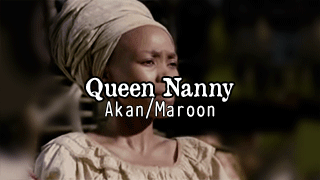
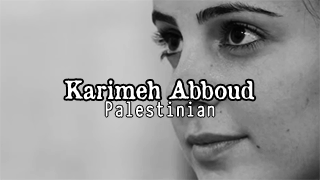
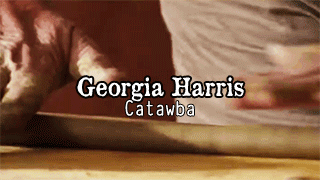
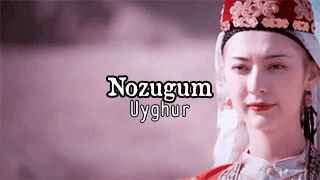

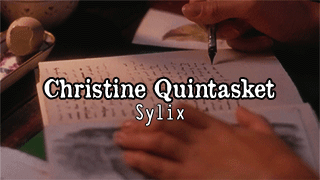

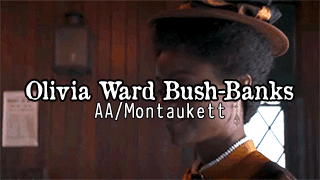
Historical Indigenous Women & Figures [6]:
Queen Nanny: the leader of the 18th century Maroon community in Jamaica, she led multiple battles in guerrilla war against the British, which included freeing slaves, and raiding plantations, and then later founding the community Nanny Town. There are multiple accounts of Queen Nanny's origins, one claiming that she was of the Akan people from Ghana and escaped slavery before starting rebellions, and others that she was a free person and moved to the Blue Mountains with a community of Taino. Regardless, Queen Nanny solidified her influence among the Indigenous People of Jamaica, and is featured on a Jamaican bank note. Karimeh Abboud: Born in Bethlehem, Palestine, Karimeh Abboud became interested in photography in 1913 after recieving a camera for her 17th birthday from her Father. Her prestige in professional photography rapidly grew and became high demand, being described as one of the "first female photographers of the Arab World", and in 1924 she described herself as "the only National Photographer". Georgia Harris: Born to a family of traditional Catawba potters, Harris took up pottery herself, and is credited with preserving traditional Catawba pottery methods due to refusing to use more tourist friendly forms in her work, despite the traditional method being much more labour intensive. Harris spent the rest of her life preserving and passing on the traditional ways of pottery, and was a recipient of a 1997 National Heritage Fellowship awarded by the National Endowment for the Arts, which is the highest honor in the folk and traditional arts in the United States. Nozugum: known as a folk hero of the Uyghur people, Nozugum was a historical figure in 19th century Kashgar, who joined an uprising and killed her captor before running away. While she was eventually killed after escaping, her story remains a treasured one amongst the Uyghur. Pampenum: a Sachem of the Wangunk people in what is now called Pennsylvania, Pampenum gained ownership of her mother's land, who had previously intended to sell it to settlers. Not sharing the same plans as her mother, Pampenum attempted to keep these lands in Native control by using the colonial court system to her advantage, including forbidding her descendants from selling the land, and naming the wife of the Mohegan sachem Mahomet I as her heir. Despite that these lands were later sold, Pampenum's efforts did not go unnoticed. Christine Quintasket: also known as "Humishima", "Mourning Dove", Quintasket was a Sylix author who is credited as being one of the first female Native American authors to write a novel featuring a female protagonist. She used her Sylix name, Humishima, as a pen name, and was inspired to become an author after reading a racist portrayal of Native Americans, & wished to refute this derogatory portrayal. Later in life, she also became active in politics, and helped her tribe to gain money that was owed them. Rita Pitka Blumenstein: an Alaskan Yup'ik woman who's healing career started at four years old, as she was trained in traditional healing by her grandmother, and then later she became the first certified traditional doctor in Alaska and worked for the Alaska Native Tribal Health Consortium. She later passed on her knowledge to her own daughters. February 17th is known as Rita Pitka Blumenstein day in Alaska, and in 2009 she was one of 50 women inducted into the inaugural class of the Alaska Women's Hall of Fame Olivia Ward Bush-Banks: a mixed race woman of African American and Montaukett heritage, Banks was a well known author who was a regular contributor to the the first magazine that covered Black American culture, and wrote a column for a New York publication. She wrote of both Native American, and Black American topics and issues, and helped sculptor Richmond Barthé and writer Langston Hughes get their starts during the Harlem Renaissance. She is also credited with preserving Montaukett language and folklore due to her writing in her early career.
part [1], [2], [3], [4], [5] Transphobes & any other bigots need not reblog and are not welcome on my posts.
568 notes
·
View notes
Text
Visit the original article to click through to the entire list - PASS IT ON
Lesson 1: Kemet
Ancient Egyptians called their land "Kemet"--or Black Land. The first person to practice medicine was from Kemet, along with the first dentist! 29 Black History Facts You Probably Didn't Learn at School: Lesson 1 01:10
Lesson 2: Shotgun homes and front porches
The shotgun home and front porch design originated in West Africa in what is now Nigeria. 29 Black History Facts You Probably Didn't Learn at School: Lesson 2 01:07
Lesson 3: Walls of Benin
The Walls of Benin were four times longer than the Great Wall of China. So, what happened to them? 29 Black History Facts You Probably Didn't Learn at School: Lesson 3 01:10
Lesson 4: University of Sankore
One of the first universities in the world was located in Mali. 29 Black History Facts You Probably Didn't Learn at School: Lesson 4 01:07
Lesson 5: 1526
The year 1619 is known as the year that Blacks were first enslaved in America. What about the year 1526? 29 Black History Facts You Probably Didn't Learn at School: Lesson 5 01:10
Lesson 6: Freedom by any means
How braided hair, Gospel music, and drums played a role in the liberation of Blacks. 29 Black History Facts You Probably Didn't Learn at School: Lesson 6 01:06
Lesson 7: Benjamin Banneker
Meet the man who helped design Washington, D.C., and that's not all. 29 Black History Facts You Probably Didn't Learn at School: Lesson 7 01:07
Lesson 8: Queen Nanny of the Maroons
She was like Harriet Tubman, but she freed slaves someplace else. 29 Black History Facts You Probably Didn't Learn at School: Lesson 8 01:05
Lesson 9: Henry "Box" Brown
Learn more about how Henry Brown got his nickname. It's incredible. 29 Black History Facts You Probably Didn't Learn at School: Lesson 9 01:10
Lesson 10: Henrietta Bowers
Learn how this undertaker used her background to free Black slaves. 29 Black History Facts You Probably Didn't Learn at School: Lesson 10 01:06
Lesson 11: John Berry Meachum
Learn more about the "Floating Freedom School" and why Meachum had to put it on a boat. 29 Black History Facts You Probably Didn't Learn at School: Lesson 11 01:04
Lesson 12: Lewis Latimer
How Louis Latimer made one of Thomas Edison's famous inventions better. 29 Black History Facts You Probably Didn't Learn at School: Lesson 12 01:00
Lesson 13: Granville T. Woods
How modern wireless technology can be traced back to Granville Woods in the 1800s. 29 Black History Facts You Probably Didn't Learn at School: Lesson 13 01:06
Lesson 14: Oscar Micheaux
The man who paved the way for today's great Black filmmakers. 29 Black History Facts You Probably Didn't Learn at School: Lesson 14 01:02
Lesson 15: Marie Van Brittan Brown
Those Ring cameras are everywhere. It basically started with Marie Van Brittan Brown's invention in the 1960s. 29 Black History Facts You Probably Didn't Learn at School: Lesson 15 01:02
43 notes
·
View notes
Text
THE AFRICAN QUEEN WHO DEFEATED THE BRITISH IN JAMAICA This is the story of the legendary Queen Nanny of the Maroons. An African woman born in present-day Ghana kidnapped and sold into slavery in Jamaica, she became a symbol of resistance, unity and power on the island. She built an autonomous community of emancipated Africans, mounted raids to free others and was successful in defeating British colonials who were forced into a peace treaty with her community after nearly two decades of war. She is a reminder of the African roots, pride and strength of African people, who did not submit to slavery but instead fought for their freedom until the end. This is also another example of women who played a pivotal role in anti-colonial struggles around the world. Does she inspire you?
14 notes
·
View notes
Note
if you could have dinner with any historical figure or fictional character who would it be and why?
Either Queen Nanny of the Maroons - the wiki page should be an explanation for why
or Toni Morrison and just being on my blog should be an explanation ;)
2 notes
·
View notes